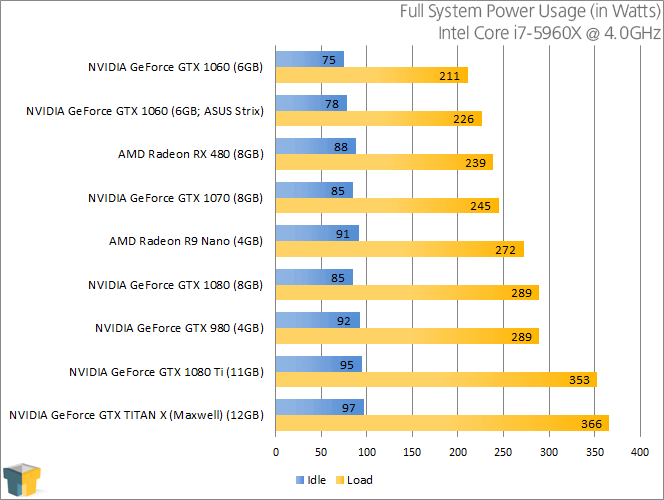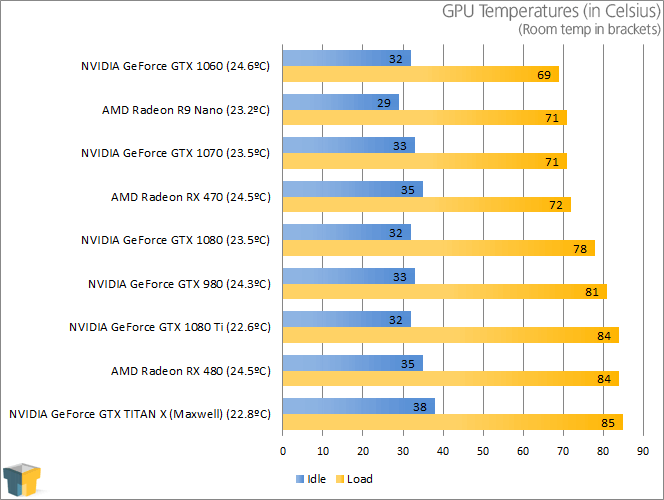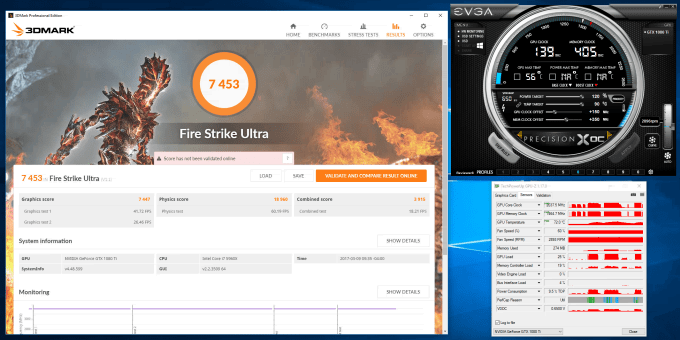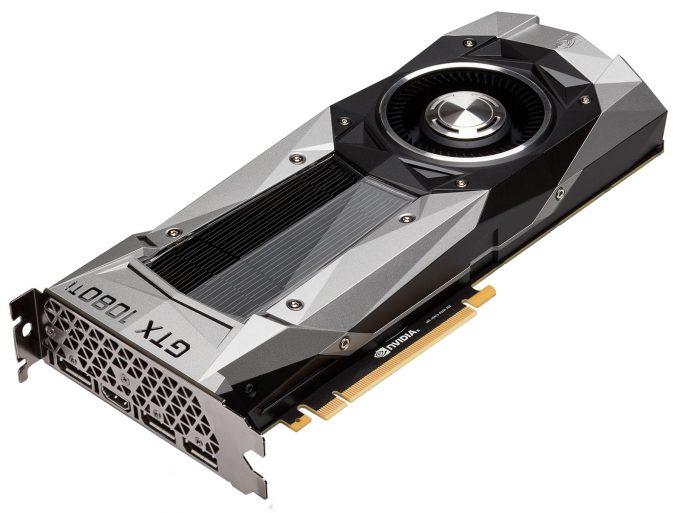- Qualcomm Launches Snapdragon 4 Gen 2 Mobile Platform
- AMD Launches Ryzen PRO 7000 Series Mobile & Desktop Platform
- Intel Launches Sleek Single-Slot Arc Pro A60 Workstation Graphics Card
- NVIDIA Announces Latest Ada Lovelace Additions: GeForce RTX 4060 Ti & RTX 4060
- Maxon Redshift With AMD Radeon GPU Rendering Support Now Available
NVIDIA GeForce GTX 1080 Ti Review: A Look At 4K & Ultrawide Gaming

If you want to dial your gaming to 11, the ideal GPU has just landed: GeForce GTX 1080 Ti. This card might sport an odd-sized 11GB framebuffer, and memory bandwidth of 11Gbps, but what ultimately matters is that it becomes the most suitable 4K gaming card to date (and not to mention, an amazing ultrawide card.)
Page 7 – Power, Temperatures, Overclocking & Final Thoughts
To test graphics cards for both their power consumption and temperature at load, I utilize a couple of different tools. On the hardware side, I rely on a Kill-a-Watt power monitor, which the PC plugs into directly. For software, I use GPU-Z to monitor the core temperature, and 3DMark’s Fire Strike 4K test to push the GPU hard.
To test, the floor area behind the (shut down) PC is tested with a temperature gun, with the average temperature recorded as the room temperature. Once that’s established, the PC is turned on and left to sit idle for ten minutes. It’s at this point when the idle wattage is noted, and 3DMark is run. It’s during the ‘Graphics Test 2’ that the max load wattage is recorded.


The GTX 1080 Ti is one powerful GPU, but it’s also a power-hungry GPU. Even so, consider this: the GTX 1080 Ti still uses less power than the original TITAN X. In a battle of ~11 TFLOPs vs. 6 TFLOPs, a single generation almost doubled the performance, but improved power draw. You’ve gotta love that.
On the temperature front, while the DVI-less back undoubtedly helps with temperatures, the card can still run quite hot. At stock speeds, it won’t be an issue (though good airflow is important), but when overclocking, you’ll definitely want to manually increase the fan speed.
Overclocking & Final Thoughts
On the overclocking front, I was able to add an additional 150MHz to the core (2037MHz peak, from 1873MHz) and 350MHz (1464MHz peak, from 1377MHz) to the memory. This configuration remained stable through a battery of tests, including some that fail quite easily with seemingly stable overclocks (Sky Diver in 3DMark is a great example).
I wanted to hit 7,500 in 3DMark’s Ultra test so bad, but I just couldn’t. Anything more than +150MHz was unstable (even +155), and the same goes for the memory: after +350MHz, it might have seemed stable, but the score didn’t improve at all. If anything, it began to drop.
Nonetheless, this super-fast card can have its performance pushed even further through simple overclocking, so I’m glad I don’t have to write a caveat. You will have to manually increase the fan speed, though, as even at stock the card can get quite toasty under stress. I can’t wait to see what kind of overclocking can be done when vendor coolers are brought in (a la ASUS STRIX and EVGA ICX).
A card like the GTX 1080 Ti isn’t hard to draw a conclusion for. It becomes NVIDIA’s most powerful gaming GPU, and it doesn’t cost over $1,000 like the TITAN series does. Instead, it costs $699, which is a $50 premium over the GTX 1080, released last May. If the prices were kept in tact, the GTX 1080 Ti would add 5GB of VRAM, at least 2 TFLOPs of performance, and 1Gbps of memory bandwidth – not bad for $50.
To throw some gamers a bone, and to help separate the Ti from the non-Ti a bit more, the GTX 1080 has experienced a price drop to $500, which makes the purchase of a new high-end GPU a bit easier. If you’re not sure whether you ultimately need a GTX 1080 or 1080 Ti, I’d encourage you to look at our performance matrix on the first page.
For 4K and 3440×1440 gaming, the GTX 1080 Ti is the best choice, as it can deliver 60 FPS at great detail with minimal effort. I wouldn’t go as far to call the Ti a “future-proof” 4K gaming card, though, but there’s none that does it better. Right now, it performs like a true beast at 3440×1440, leaving some breathing room for more advanced future titles.
If you don’t want to commit $700 to the 1080 Ti, the $500 GTX 1080 remains an awesome choice for those looking for “Great” 3440×1440 performance, or “Excellent” 1440p performance. The GPU can still handle 4K with relative ease, but you’ll have to get used to spending some effort on graphics tweaking (GeForce Experience does help here).
The GTX 1080 Ti isn’t just the fastest GeForce GPU NVIDIA’s ever created, it’s the fastest gaming GPU, period. It helps bring TITAN X-level performance to more a more affordable price-point, and even if someone didn’t want to splurge $700 on a new GPU, the new $500 price-point of the GTX 1080 is quite attractive. It’s a great time to be a PC gamer.
Pros
- NVIDIA’s fastest GeForce card.
- It goes to 11! (11GB framebuffer, 11Gbps memory).
- Becomes the closest thing to a “4K gaming” card we’ve seen.
- Offers excellent 3440×1440 performance in today’s games.
- Has good overclocking headroom.
Cons
- It’s expensive – but that’s to be expected.

NVIDIA’s GeForce GTX 1080 Ti
Support our efforts! With ad revenue at an all-time low for written websites, we're relying more than ever on reader support to help us continue putting so much effort into this type of content. You can support us by becoming a Patron, or by using our Amazon shopping affiliate links listed through our articles. Thanks for your support!







